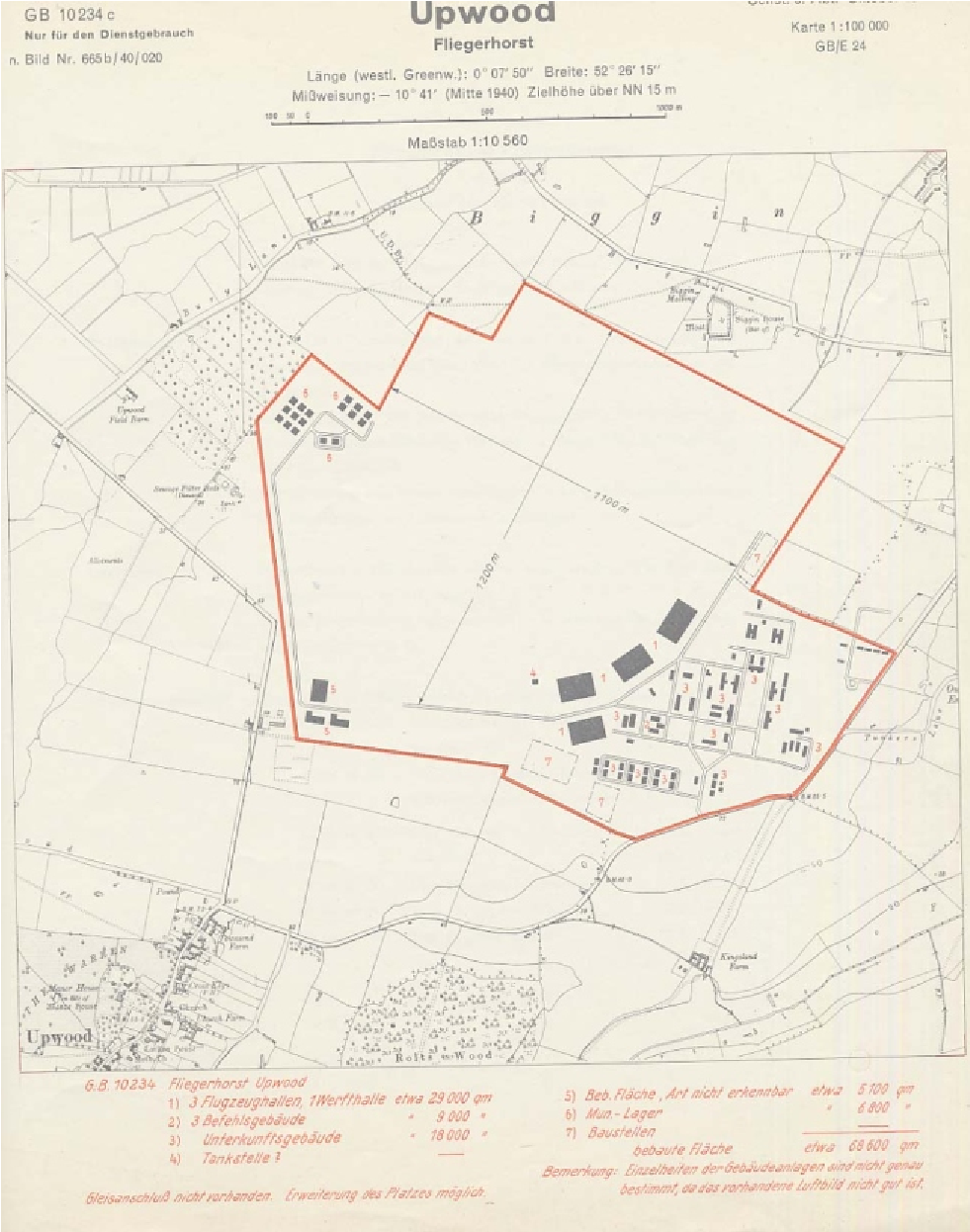During 1937 the Air Ministry considered a range of measures to minimize the impact of enemy air attacks on its airfield. These included aircraft revetments, camouflage and so-called “Scatter Fields”. The initial concept of dispersal was for aircraft to be refueled, re-armed and maintained at the parent station and merely to be parked at the “Scatter Field”. Both aircraft and personnel generally returned to the main operating base at night and hence facilities at the dispersal site were limited.
In the Spring of 1938 Bomber Command commenced action to requisition an area of grassland to the west of the Little Stukeley to Abbots Ripton road at Alconbury Hill for use as a dispersal site for aircraft from Royal Air Force Upwood some 5 miles away. Then in the May, as part of Upwood's Defence exercise on 16th and 17th Fairey Battle light bombers of No.63 Squadron, coded NE/ON, deployed to this somewhat rudimentary landing ground and some of its personnel stayed over night at the site in tents.

No. 63 Sqn Fairey Battles
No.63 Squadron had been selected for this evaluation as it had been the first squadron in May 1937 to be equipped with the single-engined Battle and the aircraft's mobility needed to be tested as it was earmarked for service with the RAF's burgeoning Advanced Air Striking Force (AASF). This expeditionary component would deploy to primitive forward bases in time of war and conduct reconnaissance and interdiction missions. In the event, the squadron became a training unit and unlike other Battle squadrons in the area did not deploy to France at the outbreak of war.
On the 2nd of June 1938 the Alconbury Hill “Scatter Field” (possibly known at the time as the Little Stukeley landing ground) was provisionally accepted as a satellite airfield. During 1939 there are indications that aircraft from a number of squadrons may have used Alconbury as a practice landing ground, Upwood's No.52 Squadron Ansons being amongst them. As the threat of war with Germany loomed ever closer, so training deployment and dispersal exercises were conducted by the Blenheim IV bombers of Nos 114 (Hong Kong) and 139 (Jamaica) squadrons based at RAF Wyton. Then at the outbreak of war the landing ground was reassigned from Upwood to Wyton, a No 2 Group of Bomber Command station.
On the 1st of September Poland was invaded and the following day the first echelon of 10 squadrons of the AASF deployed to France having been secretly mobilized on the 24th of August . On the 3rd of September a state of war was declared between Germany and Britain, and almost immediately No.139 Squadron dispatched a Blenheim to the port of Wilhelmshaven to conduct the first reconnaissance mission of the war over Germany. Over the same period Wyton's aircraft were dispersed to both local and more distant airfields such as Hullavington. However, by the 9th aircraft from both No 114, coded FD and No 139, coded XD, squadrons were to be found at Alconbury. While the latter's aircraft recovered to Wyton on the 18th, those of No 114 Squadron stayed on a semi-permanent basis until they were deployed to Conde-Vraux in France on the 9th of December as AASF replacements for returning Battle squadrons.



German Target Material Dated 1940
By the end of 1939 the RAF's dispersal plans in the United Kingdom had matured and aircraft not only deployed to sites such as Alconbury, but began to operate from them on a semi-permanent basis. Squadrons being periodically rotated through the satellite airfields between maintenance periods. Small bomb dumps were established and hutted operations rooms constructed to replace tents. Fuel was provided by vehicle and trailer mounted bowsers and increased accommodation was provided for personnel.

Original Watch Office , relocated after the war to Little Stukeley Farm Yard ( now dismantled awaiting a new home)
The story in France was somewhat more rustic with much initiative being needed to merely survive let alone operate effectively as a meaningful deterrent against a German attack. As a result a fair degree of hardship was endured by many RAF personnel over what was a very cold and snowy winter. )